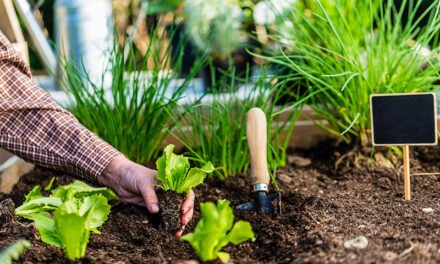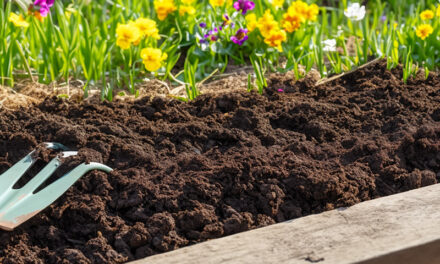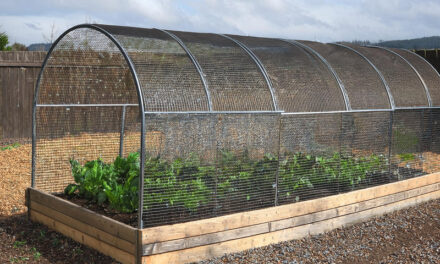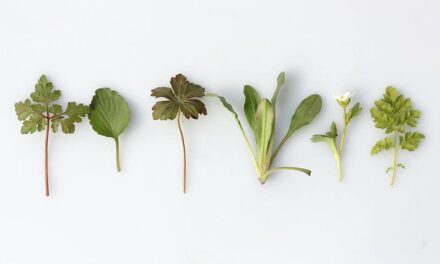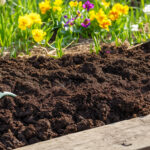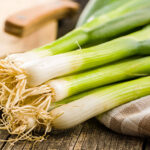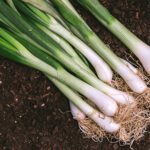Keeping your vegetable garden thriving requires effective garden pest control. Understanding common culprits and implementing proven solutions can help safeguard your crops and ensure a bountiful harvest, all while maintaining a healthy and balanced ecosystem.
Common vegetable garden pests and solutions
Here’s a handy table highlighting prevalent pests, the vegetables they target, and recommended control methods:
| Vegetable | Common Pests | Control Methods |
|---|---|---|
| Tomatoes | Aphids, Tomato Hornworms | Introduce ladybugs to prey on aphids; handpick hornworms; apply neem oil as needed. |
| Cabbage Family | Cabbage Worms, Aphids | Use row covers to prevent egg-laying; introduce parasitic wasps; apply Bacillus thuringiensis (Bt). |
| Cucumbers | Cucumber Beetles, Aphids | Implement sticky traps; plant marigolds as a deterrent; use insecticidal soap. |
| Lettuce | Slugs, Aphids | Set up beer traps for slugs; encourage natural predators like birds; apply diatomaceous earth. |
| Beans | Bean Beetles, Aphids | Handpick beetles; introduce beneficial insects; use neem oil. |
| Carrots | Carrot Rust Flies | Employ floating row covers; practice crop rotation; avoid thinning carrots during peak fly activity. |
| Squash/Zucchini | Squash Bugs, Vine Borers | Handpick and destroy eggs; use row covers until flowering; apply Bt to control borers. |
| Peppers | Aphids, Spider Mites | Introduce predatory mites; maintain proper watering; apply insecticidal soap. |
Effective garden pest control strategies for your vegetable garden
Keeping pests at bay in your vegetable garden doesn’t have to mean resorting to harsh chemicals. By using natural and sustainable methods, you can protect your crops while maintaining a healthy ecosystem. Here are some proven organic pest control strategies:
Companion planting
Companion planting is a smart garden pest control strategy that naturally deters pests while enhancing plant health and yields. Certain plants release strong scents or chemicals that repel harmful insects or attract beneficial ones. For example, marigolds emit a scent that repels nematodes and aphids, while basil helps ward off mosquitoes and whiteflies when planted near tomatoes. Chives are effective against carrot flies, and dill attracts predatory insects like ladybugs that feed on aphids. Other great companion planting options include:
- Tomatoes + basil: Repels aphids and enhances flavor.
- Carrots + onions: Each repels the other’s common pests.
- Beans + marigolds: Deters bean beetles and nematodes.
- Cabbage + rosemary: Rosemary helps deter cabbage moths.
Crop rotation
Rotating crops annually helps break pest and disease cycles by depriving pests of their preferred food sources. Many pests and diseases overwinter in the soil, waiting for their favorite crops to return. By rotating vegetable families, such as planting legumes (peas and beans) one year and brassicas (cabbage, kale) the next, you can disrupt their lifecycle and reduce infestations. A simple rotation plan could be:
- Year 1: Legumes (beans, peas) – enrich soil with nitrogen.
- Year 2: Leafy greens (lettuce, spinach) – benefit from nitrogen levels.
- Year 3: Root vegetables (carrots, onions) – improve soil aeration.
- Year 4: Fruiting crops (tomatoes, peppers) – take advantage of enriched soil.
Physical barriers
Prevent pests from accessing your crops by using physical deterrents that create a protective shield around plants. These barriers are especially effective against flying and crawling insects, as well as larger pests like birds and rabbits. Common physical barriers include:
- Row covers: Lightweight fabric that lets sunlight and rain through but blocks insects. Ideal for cabbage moths and carrot flies.
- Netting: Helps protect fruits and leafy greens from birds and butterflies.
- Collars: Placing cardboard or plastic collars around young seedlings can deter cutworms and other soil-borne pests.
- Copper tape: Effective in repelling slugs and snails from raised beds and pots.
Natural predators
Encouraging beneficial insects and wildlife in your garden can significantly reduce pest populations. Predators such as ladybugs, lacewings, and parasitic wasps naturally feed on common pests like aphids, caterpillars, and whiteflies. You can attract these helpful allies by:
- Planting nectar-rich flowers such as dill, yarrow, and calendula to provide food for beneficial insects.
- Leaving patches of wildflowers or native plants to create habitat for predatory insects.
- Installing bird feeders and water sources to attract birds that eat caterpillars and slugs.
Organic sprays
When pest populations get out of control, organic sprays can provide an effective garden pest control solution without harming beneficial insects or the environment. Some natural options include:
- Neem oil: Disrupts insect growth and feeding behavior, effective against aphids, whiteflies, and caterpillars.
- Insecticidal soap: Made from natural fatty acids, it works well on soft-bodied insects like spider mites and mealybugs.
- Homemade garlic or hot pepper sprays: These natural deterrents can repel pests such as aphids and beetles without harming plants.
- Diatomaceous earth: A natural powder that dehydrates crawling insects like slugs and ants when sprinkled around plant bases.
Preventative measures to keep pests away from your vegetable garden
Preventing pests before they become a problem is the key to maintaining a healthy vegetable garden. By creating strong, resilient plants and an environment that discourages pests, you can reduce the need for intervention later. Here are some essential preventative measures:
Healthy soil
A well-nourished soil is the foundation of a thriving, pest-resistant garden. Healthy soil encourages strong root development, which helps plants better withstand pest attacks and environmental stress. To maintain nutrient-rich, well-drained soil:
- Add organic matter: Regularly incorporate compost, aged manure, or leaf mold to improve soil fertility and structure.
- Use mulch: Organic mulches like straw or wood chips help retain moisture, suppress weeds, and provide habitat for beneficial organisms that outcompete pests.
- Encourage soil biodiversity: Healthy soil contains a diverse range of microorganisms that naturally suppress harmful pests and diseases. Planting cover crops, such as clover or mustard, can improve soil health and deter pests.
- Test soil regularly: Knowing your soil’s nutrient levels and pH allows you to adjust amendments accordingly and prevent deficiencies that weaken plants.
Regular monitoring
Catching pest problems early can prevent them from spreading and causing significant damage. Regularly inspecting your plants allows you to take action before infestations get out of hand. To monitor effectively:
- Check undersides of leaves: Many pests, such as aphids and spider mites, hide beneath leaves, where they are less visible.
- Look for early warning signs: Watch for holes, yellowing leaves, sticky residue (a sign of aphids), or discolored patches that may indicate a pest problem.
- Use sticky traps: Placing yellow sticky traps around your garden can help monitor flying insect populations and alert you to potential infestations.
- Inspect soil: Dig around plant bases to check for signs of root pests such as grubs and wireworms.
Proper watering
Watering your plants correctly can make a significant difference in preventing pest infestations. Too much or too little water can stress plants and make them more vulnerable to pests. Follow these guidelines for effective watering:
- Water in the morning: This allows foliage to dry quickly, reducing the risk of fungal diseases and pests like slugs that thrive in damp conditions.
- Avoid overhead watering: Use drip irrigation or soaker hoses to deliver water directly to the roots and prevent excess moisture on leaves.
- Don’t overwater: Waterlogged soil can attract slugs, snails, and fungal gnats, leading to rot and other plant health issues. Always check soil moisture levels before watering.
- Mulch to retain moisture: Mulching not only conserves water but also helps prevent soil from drying out too quickly in warm weather.
Proper plant spacing
Crowded plants can create a humid environment that pests and diseases love. Ensuring adequate spacing between plants allows for good air circulation and minimizes hiding spots for pests. Follow recommended spacing guidelines based on the vegetable type and growth habits.
Choosing pest-resistant varieties
Some vegetable varieties are naturally more resistant to pests and diseases than others. When planning your garden, look for varieties labeled as pest-resistant or disease-resistant, such as:
- Blight-resistant tomatoes
- Clubroot-resistant brassicas
- Powdery mildew-resistant cucumbers
Keeping your garden tidy
A clean garden is less inviting to pests looking for shelter and food. Regular maintenance can help prevent pests from settling in:
- Remove weeds: Weeds provide hiding spots and food sources for pests, so keep your garden beds weed-free.
- Clear debris: Remove dead leaves, fallen fruit, and plant residues that can harbor pests and diseases.
- Rotate crops: Changing plant locations each season prevents pests from establishing a permanent home in your soil.


